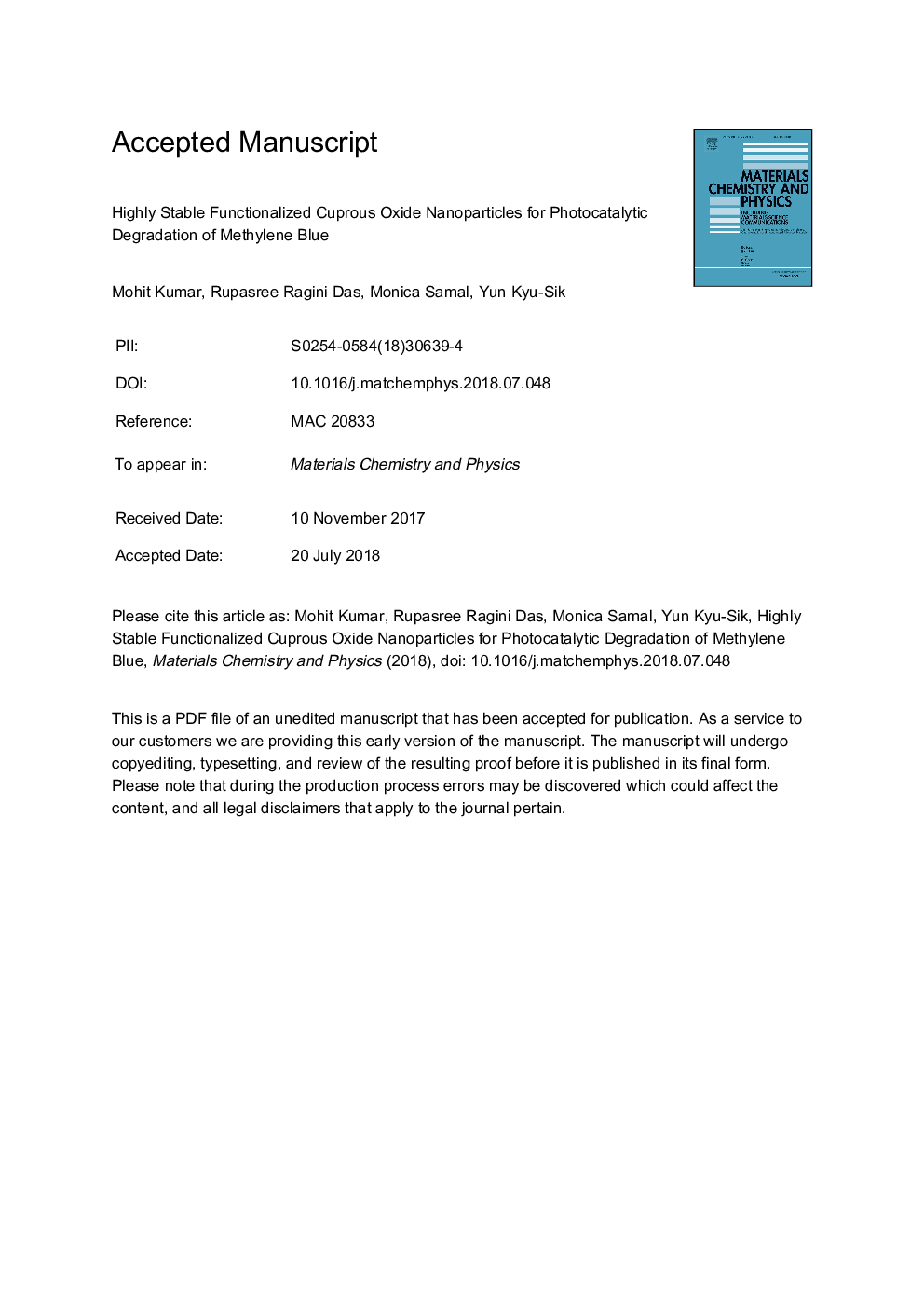| کد مقاله | کد نشریه | سال انتشار | مقاله انگلیسی | نسخه تمام متن |
|---|---|---|---|---|
| 7921214 | 1511745 | 2018 | 29 صفحه PDF | دانلود رایگان |
عنوان انگلیسی مقاله ISI
Highly stable functionalized cuprous oxide nanoparticles for photocatalytic degradation of methylene blue
ترجمه فارسی عنوان
نانوذرات اکسید فسفر بسیار فعال ثابت شده برای تخریب فتوکاتالیتی آبی متیلن
دانلود مقاله + سفارش ترجمه
دانلود مقاله ISI انگلیسی
رایگان برای ایرانیان
کلمات کلیدی
موضوعات مرتبط
مهندسی و علوم پایه
مهندسی مواد
مواد الکترونیکی، نوری و مغناطیسی
چکیده انگلیسی
We report the synthesis and characterization of Cu2O nanoparticles (NPs) in the presence of the coordinating ligands like l-glutamic acid (Glu-Cu2O) and d-glucosamine (GlcN-Cu2O). Even if -NH2 group is common to both the ligands, l-glutamic acid is a straight chain compound containing additional two -COOH groups, whereas, glucosamine is a cyclic compound with additional four -OH groups and an ether (-O-) linkage. Thus the coordinating ligands are different in the nature of the functional groups as well as their molecular skeletons leading to cubic morphology (â¼350â¯nm of average edge length) for l-glutamic acid coordinated Cu2O and spherical morphology (â¼250â¯nm of average diameter) for glucosamine one as observed by Field Effective Scanning Electron Microscopy (FE-SEM) and Transmission Electron Microscopy (TEM) images. The observed band gap of Cu2O of 1.89â¯eV is decreased to 1.84 ev for both the ligated structures. Both the ligated cuprous oxide (Cu2O) nanoparticles (NPs) were used for the photocatalytic degradation of methylene Blue (MB). The spherical GlcN-Cu2O showed 98% degradation of MB in 105â¯min and after 3 cycles of operation, the photocatalytic activity was enough for the 93% degradation of the dye, whereas, the cubic Gu-Cu2O could degrade MB up to 97% in 135â¯min and after three cycles, only 86% of the dye was degraded. This indicates, the molecular skeleton and functional groups on the ligand control the shape and size of the Cu2O nanoparticles as well as the photocatalytic efficiency and stability. It is presumed, the cyclic glucosamine ligand can protect the Cu2O nanoparticles from erosion during the degradation process.
ناشر
Database: Elsevier - ScienceDirect (ساینس دایرکت)
Journal: Materials Chemistry and Physics - Volume 218, 1 October 2018, Pages 272-278
Journal: Materials Chemistry and Physics - Volume 218, 1 October 2018, Pages 272-278
نویسندگان
Mohit Kumar, Rupasree Ragini Das, Monica Samal, Kyusik Yun,
